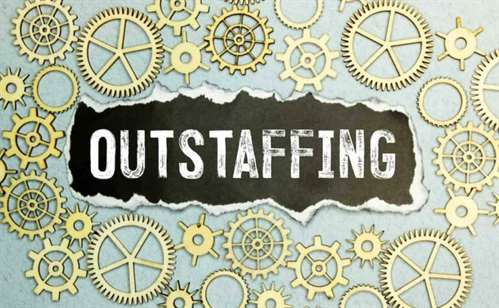25 May What the embedded-finance and banking-as-a-service trends mean for financial services
Small businesses starting up today may never interact with a conventional bank. By logging into their e-commerce or accounting platform, they can open a deposit account, order a debit card, and meet most of their financing needs. Rather, they are software companies that partner with banks and technology providers to embed financial products into a single seamless, convenient, and easy-to-use customer experience. This new form of partnership between banks, technology providers, and distributors of financial products via nonfinancial platforms underpins what has been hailed as the embedded-finance revolution. Sitting at the intersection of commerce, banking, and business services, payments has been one of the first use cases of embedded finance, and a large number of the aspiring embedded-finance providers originate from the payments industry.
With more companies acting as financial companies, financial providers will need to become more accustomed to sharing customers with non-financial companies for services only they used to provide. Embedded insurance at the in-store checkout has been around for some time, but fintech has facilitated its spread to digital marketplaces. Embedded insurance is useful because it’s offered when and where people need it, with no need for a separate engagement with an insurance company or agent—and sometimes with multiple competitive options. In this article, we’ll explore what embedded finance is, the different types of embedded finance, and outlooks for growth and future trends in the embedded finance industry.
What Is the Future of Embedded Finance?
We have already seen how BaaS-enabled embedding banking is helping to innovate customer journeys, and it is clear the next area of disruption will be to supercharge brands’ loyalty programmes.» SmartPay Rewards, a mobile app for gas stations and convenience stores, offers customers discounts and rewards in exchange for using its embedded bank account payments tool. Using ACH for payments saves merchants on fees because ACH fees are usually less than credit cards. Discounts and rewards increase brand loyalty and keep customers coming back. B2B payments are business services that enable customers to send digital invoices, which can be paid using an embedded finance option. We do not include bank-provided cash management or treasury solutions in our definition.

They develop innovative use cases—such as just-in-time fund deposits into cards or crypto-linked payment authorization—as a basis for creating novel financial products for end customers. Over time, however, the demand for integrated financial solutions and the synergies that can be captured across product categories are likely to prompt these providers to protect their flanks with product breadth as well. They can use an embedded banking strategy to innovate and interact with customers in new ways, ultimately contributing to increased engagement and retention, growth at a lower cost of customer acquisition, and expansion into new target segments. Embedded banking is a new concept in the financial industry that allows customers to access banking services seamlessly through non-banking platforms and ecosystems. CIMB Bank PH, a pioneer of this model, enables non-banking entities to offer payments, savings, and lending services to their growing bases, benefiting Filipino consumers who are digitally savvy. The emergence of fintechs has revolutionized the sector with innovative technology offerings that give the modern customer uberized banking experiences.
Key decisions for embedded-finance market entrants
It’s estimated that embedded financial services will produce $230B in revenues in 2025—a 10-fold increase over the $22.5B in revenues in 2020. As embedded services evolve, the total addressable market stands to grow. Enablers will move beyond payments and debt into new value-added services, including insurance, tax, and payroll.

The European Banking-as-a-Service provider’s study revealed that over a third (37%) are more likely to seek out brands that offer BNPL and flexible payment options due to the high cost of living, with this figure rising to 50% in the age range. Competitive prices are cited as the most important factor to 44% of consumers when it comes to their brand loyalty, closely followed by a good selection of products (43%). The opportunity for financial services to expand into previously non-financial areas is unprecedented—and still in the very early stages. This financial transformation will continue to gain strength across nearly every sector as more companies adopt embedded finance and as consumers become more comfortable with these services.
Get Started with Embedded Banking
Buying, selling and trading stocks can happen without leaving the app or working with an investment adviser. Censuswide is a member of the Market Research Society Company Partner Service, whose code of conduct and quality commitment it strictly adheres to. Its MRS membership means that it adheres to strict guidelines regarding all phases of research, including research design and data what are embedded payments collection; communicating with respondents; conducting fieldwork; analysis and reporting; data storage. Financial institutions could migrate to a new digital core system upon which to build this new platform, but in the short-term, few will. If you have questions about connecting your financial accounts to a Plaid-powered app, visit our consumer help center for more information.
Global Research Leveraging cutting-edge technology and innovative tools to bring clients industry-leading analysis and investment advice. Asset Based Lending Enhance your liquidity and gain the flexibility to capitalize on growth opportunities. International Banking Power your business’ global growth and operations at every stage.
How to offer embedded banking?
Thinking beyond the core functionalities to become a platform orchestrator of a complete ecosystem of players is the way forward for the sector. Outside in embedded banking is the perfect solution for banks that want to provide top-of-the-line financial services in a constantly changing economic environment that requires small businesses everywhere to adopt more efficient technology. Inflation and interest rates increases means money is becoming tighter than ever; small businesses are the most at risk in an economic slump. In particular, SMBs want more payments options and faster access to their cash, while solutions like flexible invoicing options, expedited collection of payments and automated data exchange could become vital for a business’s survival. The initial traction of embedded finance—and financial fabric providers— should be on the radar of incumbent financial institutions, payment processors and core banking providers. With advantages in design/UX and distribution, technology companies are aiming to disintermediate the financial relationships that incumbents have with their customers.
- The only thing standing in the way of traditional banks and the next wave of innovation are their legacy systems that cannot support advanced technologies.
- First Security Bank continues to experience success with Apiture’s Business Banking platform, including winning a bid for a large hospital client over Bank of America.
- Toast, which provides point-of-sale software and hardware, uses its payments revenue to subsidize its hardware, lowering overall costs for restaurant owners.
- We pioneered the value-added approach to investing and have invested at the forefront of the technology industry in more than 370 companies since our founding in 1984.
Fintechs like Wise are offering an all-in-one banking solution for e-commerce and other marketplaces managed by them. Players like Weaver have launched a range of embedded banking tools for the services sector. Fintechs like Loot and Pockit are offering real time notifications the moment a transaction is completed, even before the card is removed from the ATM.
Follow us online
Among embedded-finance distributors and their end customers, demand is already maturing for a range of deposit, payment, issuing, and lending products . In addition to these traditional financial products, novel use cases are emerging. For example, embedded-finance distributors are offering prepaid cards to employees as part of earned-wage access programs; giving merchants the option to use their deposit accounts for instant-payments settlement.
This can include offering lending services or creating embedded bank accounts for businesses. The second one is to join the embedded finance movement as a connector, a bridge https://www.globalcloudteam.com/ between financial service providers and non-financial businesses. This may resemble a data transfer network, used by businesses willing to offer financial products.
View All Financial Services & Investing
In fact, over time, banking has always experienced an evolution in the methods by which financial services are distributed. Embedded banking, which still utilises APIs and web platforms, is something usually defined as products and services delivered by a regulated and fully licensed bank. Regulatory requirements, compliance and risk are also factored into the offering – which is something that non-banks may struggle to provide without a banking licence.


No Comments